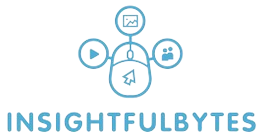With over 1 billion active users, the app is a treasure trove of photos and videos, capturing everything from everyday moments to breathtaking landscapes. But what if you want to save these videos for offline viewing or to share them on other platforms? That’s where Instagram video download comes in. In this article, we will explore the world of downloadable Instagram videos.
HD Videos on WhatsApp: Upgrade Now
In the age of social media, Instagram reigns supreme for captivating visuals. But what if you could enjoy those stunning photos and videos beyond the app? Delve into the world of Instagram video downloads and discover a treasure trove of content to revisit, share, or use for inspiration. This article...
Subscription Sensations: Top Picks
The subscription box craze has exploded, offering a convenient and exciting way to discover new products and indulge in your passions. From beauty gurus to bookworms, there's a subscription box for practically everyone. But with so many options, where do you even begin? This curated list unveils the top subscription...
Video Chat Essentials: Best Gear
The rise of video chat has transformed how we connect. Whether it's catching up with loved ones across the globe or conducting a business meeting from the comfort of your couch, crystal-clear video and crisp audio are essential. But with a dizzying array of webcams, microphones, and headsets on the...
iPhone Security Boost: Lockdown Mode
In today's digital world, where our phones hold a treasure trove of personal information, security is paramount. Apple, ever the innovator, has unveiled Lockdown Mode, a revolutionary new feature that throws a digital fortress around your iPhone. But what exactly is Lockdown Mode, and how can it protect you from...
Delivery Drones: Future of Shipping
Imagine a world where your online purchases whiz through the air, landing silently at your doorstep. This isn't science fiction anymore. Delivery drones are rapidly becoming a reality, promising to revolutionize the way we receive our goods. Buckle up and explore the exciting (and slightly terrifying) potential of drone delivery....
Legal Web Scraping: What’s Allowed?
In the age of big data, information is king. But have you ever wondered how all that data gets collected and organized? Web scraping is a powerful tool that extracts information from websites, but is it legal? Dive into the murky waters of web scraping regulations to understand what's allowed...
